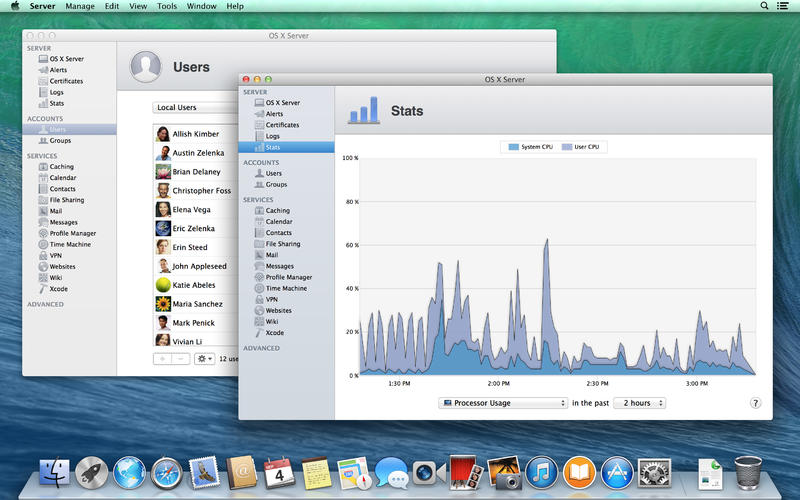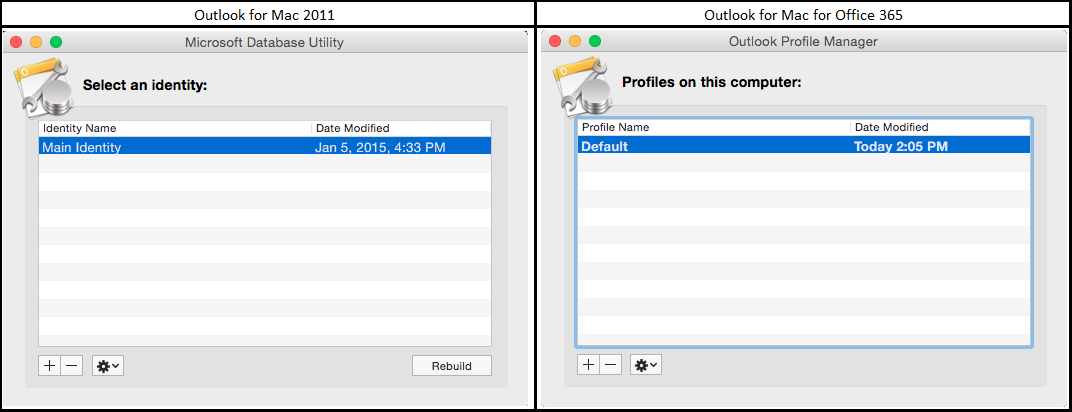Bootcamp has long been the default way to run Windows on a Mac. We’ve covered it before, and you can use the MacOS tool to partition your Mac’s hard drive to install Windows in its own space. There are also tools like Parallels, which lets you install Windows in a virtual machine on top of MacOS.
However, I recently purchased a new MacBook Pro 2019, and I wondered if it would be possible to install Windows 10 on it, without using Bootcamp. I wanted to specifically do this to keep my MacOS and Windows stuff separate, and also preserve all of the 128GB of disk space on my base model MacBook for MacOS.
After doing some research from multiple YouTube videos and guides on Google, I found out how. Please be aware, though, that my piece isn’t meant to be a guide, it’s a personal look at how I got Windows running on my MacBook, without using Bootcamp. Apple still recommends Bootcamp as the best method for installing Windows 10 on a Mac.
And, just like with using Bootcamp or Parallels on MacOS, I want to mention that I still needed to buy a valid, unused Windows 10 license key to legally and properly activate Windows. Finally, I want to mention that while my method works, you’ll be following at your own risk if you decide to use my experience for inspiration. We can’t be held liable for damages to your computer.
Step 1: Gather the materials
Before getting started, there were a couple of things I needed. First off, I purchased an external SSD which I knew would be fast enough to handle Windows. I also had another USB drive handy so I could transfer the Bootcamp support files off my Mac and into Windows during install.
I also needed an external keyboard and mouse. Once the MacBook initially boots into Windows, the mouse and keyboard the MacBook don’t work for the out of the box set up due to the lack of drivers. Of course, I also needed to have an existing Windows 10 PC with an internet connection and a valid Windows 10 install. This is because I had to download a Windows ISO and the Bootcamp support tools, as well as the WintoUSB support tool.
You should now have a triple-booting MacBook Pro. Using rEFInd you can select the appropriate OS and it should boot cleanly on your hardware. In the event that rEFInd gets clobbered (you'll know, because a power-cycle takes you to the built-in macOS boot manager) you should still be able to boot into Windows, but you'll probably lose the. Its file-transfer features aren't worth paying for unless you really love using the app as a file manager as well. If you want to try before you buy, make up your mind quickly; my promised 15 days of free access to the Pro features somehow elapsed in less than five. MuCommander, Path Finder, and nnn are probably your best bets out of the 18 options considered. 'Available on Linux, Mac, and Windows' is the primary reason people pick muCommander over the competition. This page is powered by a knowledgeable community that helps you make an informed decision.
Step 2: Download the Windows 10 ISO and WintoUSB
To begin my process, I headed to my Windows 10 PC and downloaded the Windows 10 ISO using the media creation tool. The download is free, but a Windows 10 license is required to activate Windows once it successfully booted on my MacBook.
While Windows 10 was downloading, I also downloaded WintoUSB. This is a free tool that lets me install Windows 10 to an external SSD drive. The software bypasses the measure from Microsoft which disallows installing Windows 10 on external drives. The free version only allows for the installation of Windows 10 Home, but a $25 upgrade will let you install Windows 10 Pro if wanted.
Step 3: Disable the security features of the Apple T2 Chip in the MacBook
Next, I had to turn on my MacBook and disable the security features of the Apple T2 chip. It’s a bit like the features built into the BIOS of modern Windows PCs, as the Apple T2 chip is set so that a MacBook will only boot trusted operating systems from Apple.
By default, the T2 Chip also disables the ability to boot from an external drive, so I had to turn this off this to boot Windows externally. Disabling this had no side effect on my MacOS installation. TouchID and other areas of MacOS still work just fine.
To disable the security features in the T2 chip, I turned on my MacBook. Once on, I held down the Command and R keys until I saw the Apple Logo. The MacBook then booted into a recovery space. I then choose Utilities > Startup Security Utility from the menu bar.
After authentication, under Secure Boot, I then clicked No Security. And, under external boot, I choose to allow booting from external media. When done, I clicked the X to close the window. I ended by going to the Apple menu and shutting down my Mac as usual
Step 4: Download the Bootcamp Support drivers
Next up, I had to go back to my MacBook. I logged in as usual and searched for Bootcamp in Spotlight. When it was open, I clicked the menu bar at the top and choose Action, followed by Download Windows Support Software. To continue, I saved it to my desktop. When finished, I plugged a separate USB drive into my MacBook and copied the folder and files I just downloaded.
Step 5: Use WintoUSB & then copy the Bootcamp Files to the Drive
Next, back to my Windows 10 PC, I installed WintoUSB and then plugged in the SSD. To get started with this process, I had to click where it says Image File. I then navigated to where I saved the Windows 10 ISO file, and choose it.
I then had to click Windows 10 Home and choose Next. After that, I clicked Next and chose my SSD from the drop-down menu. I also had chosen GPT for UEFI where it says Selected device needs to be formatted. To continue, I choose Legacy under Installation mode and click Next. Win to USB then created a bootable version of Windows. It took about 10-15 minutes to complete.
When the process was finished, I copied the BootCamp Support files I had downloaded earlier off the USB and onto the root of the SSD with the new Windows install. This was important for the next step.
Step 6: Boot your Macbook from the newly created SSD or USB and then install the drivers
To end the process, I had to boot my MacBook from the external SSD. With the security features of the T2 chip disabled, I did this by holding down the Option Key when I saw the Apple logo. I then choose the external SSD as the boot drive. It was labeled UEFI.
As Windows didn’t have the drivers for my MacBook yet, I had to plug in a keyboard and mouse into my MacBook via one of the USB-C ports. I also used a USB-C hub and plugged my Macbook into an ethernet cable, because I wanted to sign in with a Microsoft account on the setup.
I set up Windows as usual, and once I was on the desktop, I opened up the File Explorer, and clicked the C drive and opened the folder that says Windows Support. I then launched the Bootcamp set up program to install all the proper drivers for my MacBook.

This final part took a while and caused the Bootcamp installer to freeze, but I used Task Manager to kill the Bootcamp process and then rebooted the MacBook and tried again. It eventually worked and I got a working version of Windows running externally on my MacBook!
Why did I do this? And what are the benefits?
So, the question remains, why did I do this to begin with? Well, as I said before, my MacBook Pro only has 128GB of storage. I am using my MacBook for video editing, so storage is at a premium. I didn’t want to run Windows in Bootcamp or in Parallels and take away valuable storage space from my MacBook. By running it externally from an SSD, I freed up that space, and I was able to keep Windows separate from MacOS. This is one advantage to my method.
I also opted for a 500GB SSD, so I was able to gain more storage space that my MacBook has for Windows to begin with. And, since I mainly use Windows on a daily basis, I had the same storage space for Windows that I do on my usual Windows machine, the Surface Laptop 3. I actually am using my MacBook as my main machine now, too, for this same reason.
Of course, there are some caveats. Windows 10 works fine on a MacBook when running externally. The battery life and overall system performance of the MacBook are the same as it would be if Windows was running on an internal drive. That’s about 6 hours of battery and good performance for multitasking in Edge.
However, the read and write speeds in Windows are not nearly as fast as it would be if it was running on the MacBook’s internal SSD. This is due to the limitation of the external SSD itself, which only hits around 550MB/S read and write speeds.
Still, though, this is a nifty little trick that I am glad I pondered upon. Some people might want to try my method to turn a MacBook into a full-blown Windows machine.
Share This Post:
/PowerMyMac /Your Best File Manager for Mac as of 2021
What is the file manager in macOS called? Mac has its very own file manager and that is what we called Finder. However, there are still some Mac users who are completely satisfied with what the Finder can do. That is why they are resulting to have another file manager for their files and other data. That is the reason why in this article, we are going to show you two of the best file manager for Mac, which is iMyMac PowerMyMac File Manager and Commander One File Manager.
Tips:
Article GuideWhat Finder Alternatives Can Be the Best File Manager?iMyMac PowerMyMac File ManagerCommander One File ManagerConclusion
What Finder Alternatives Can Be the Best File Manager?
There are many options in finding a best file manager for Mac computer, and yes, as mentioned above though Mac has already had its own file manager, it still lacks features which are preferred by users, and the second reason is that it lacks control which is preferred by pro-Mac users. There are good alternatives to Finder such as iMyMac PowerMyMac, Commander One, muCommander, ForkLift, Path Finder, Dual-pane, and File Manager Pro, all can be Mac file explorer app. Today we'll talk about some of these Mac file organizers.
iMyMac PowerMyMac File Manager
There is one new best file manager for Mac that you can have in 2021. This best file management software is actually very easy and simple to use for you to be able to organize all the files that you have on your Mac and also shred those that you no longer need. The application that we are talking about is no other than the iMyMac PowerMyMac. With this Mac file manager, you will be able to do anything that you want all in one application that other Mac application cannot do.
Now for you to be able to know on how the File Manager feature of the iMyMac PowerMyMac works, go ahead and check out the guide below.
NOTE: The iMyMac PowerMyMac can work in two ways. One is that it can be a file viewer or file browser for Mac and the other one is that it can become as a file shredder.
Option 1: File Viewer – iMyMac PowerMyMac
Step 1: File Manager for Mac Free Download

First off is that you have to download the iMyMac PowerMyMac from our official website. And then after that, have the application installed on your Mac.
Tip: The current version does not support the following function temporarily, but a special software that supports the following function will be released in the future.
Step 2: Launch PowerMyMac
Once that you have completely installed the iMyMac PowerMyMac, then go ahead and launch the program. As you can see on the main interface of the program, you will be able to see three options at the top of the window screen. The “Status”, the “Cleaner”, and the “Toolkit”. If you are going click on the “Status” option, you will be able to see on your screen the system status of your Mac.
Step 3: Choose The Module

Apple Macbook Pro Software Download
After launching the iMyMac PowerMyMac and checking your system status, all you have to do is to click on the “Toolkit” option. From there, the iMyMac PowerMyMac will then show you a list of actions that you can do. From that list, go ahead and click on the FileManager module.
Step 4: Select the View Files
After that, go ahead and enter the FileManager. Once that you are in, you will be able to see two options on your screen. The “View Files” and the “Shred File” options. From there, go ahead and choose on “View Files.
Step 5: Drag Some File to View
After that, go ahead and drag a certain file from your Mac that you would wish to see its detail. As you can see, the file name will be located on the left side of your screen and the detail information of the file will be shown on the right side of your screen. This includes the path of the file, the size, and the time that you have created it and as well as the last time modification had taken place.
NOTE: You can just go ahead and continue on dragging and dropping files for you to be able to view the details of the rest of the files that you have. This way, it will be easier for you to view them rather than going back to the original page.
Option #2: Shred File
As we have mentioned earlier, this best file manager for Mac also comes with the “Shred File” tool. For you to be able to get rid of the files that you want, let us continue with the guide.
Step 6: Select the Shred File Option
If you want to try this feature, all you have to do is to click on the arrow icon for you to be able to go back on the homepage of the FileManager module. From there, go ahead and choose “Shred File”.
Step 7: Drag the File You Want to Shred
After that, go ahead and drag and drop the file that you would want to remove from your Mac. Here, you will be needing to drag the file to the screen.
NOTE: Make sure that the file that you are going to put in this section is the one that you no longer need. This is because once that you have crashed the file, you will not be able to recover it anymore.
Step 8: Shred the File You No Longer Need
After choosing the file that you want to delete, go ahead and confirm the action and then click on the “Shred” button located at the right side of your screen. And then once that the process is complete, you will be able to see a message that says “Shred Success”.
Commander One File Manager
Some users might agree that Commander One is one of the best file manager for Mac because it allows them to manage everything in an efficient way with less issues. The other thing is that the software has a dual panel design, which means that there will be information on files on one side of the window will be showing the information on files which is currently viewed.
Kindly read the article below for more Commander One reviews.
Commander One Features:
Below are some features submitted by some Commander One users.
- Dual Pane Mode
- Support Hotkeys
- View Hidden Files
- Root Access
- File Preview
Commander One Pros:
Below are some Commander One Pros admitted by some users.
- Easy to use
- Nice Features
- FTP client available
- Free
People Also Read:How to Enable or Disable Mac ExtensionsApp Not Safe on Mac, Full Solution are Offered
Conclusion

We introduce 2 best file managers for Mac in this post. Both Commander One and PowerMyMac offer powerful features that allow you to manage your files, thus, optimizing your Mac. The decision is in your hand whether you would like to use PowerMyMac’s special features like all of the useful toolkits with an affordable price. You could also check out the free trial here. On the other hand, even though Onyx is free, it only provides you with basic features.
ExcellentThanks for your rating.
Rating: 4.5 / 5 (based on 87 ratings)
People Also Read:
PowerMyMac
A powerful all-in-one App for Mac
Macbook Pro Osx Software Free
Free DownloadClean up and speed up your Mac with ease